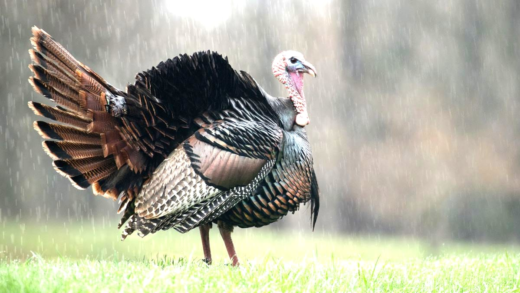Hoofed mammals, or ungulates, are diverse animals crucial for ecosystems. They reproduce through various strategies, with strong parental care. However, they face threats like habitat loss and poaching. Human interaction can both help and harm these species, highlighting the need for conservation. Ultimately, hoofed mammals maintain ecological balance, control vegetation, and serve as prey for carnivores.
What Are Hoofed Mammals?
Hoofed mammals, known scientifically as ungulates, are a diverse group of animals characterized by their unique hooves. These adaptations allow them to thrive in various environments, from grasslands to forests. Examples of hoofed mammals include deer, horses, and pigs. Hoofed mammals can be divided into two main categories: even-toed ungulates (artiodactyls) and odd-toed ungulates (perissodactyls). Their hoof structure varies, influencing their movement and habitat preferences.
Types of Hoofed Animals
Hoofed animals are primarily classified into two groups:
- Even-toed ungulates: These include animals like deer, cattle, and sheep. They typically have two main weight-bearing toes on each foot.
- Odd-toed ungulates: This group includes horses and rhinoceroses, characterized by having one or three weight-bearing toes.
Both groups exhibit various adaptations that help them survive in their specific habitats. Understanding these types is crucial for appreciating their ecological roles.
Adaptations of Hoofed Mammals
Hoofed mammals have evolved several adaptations that enhance their survival. Their hooves provide stability and speed, essential for escaping predators. For instance, the long legs of a gazelle enable swift running, while the sturdy hooves of a bison support heavy weight and rough terrain.
Additionally, these mammals often possess unique digestive systems, allowing them to process fibrous plant materials efficiently. Their social structures, such as herding behavior in antelopes, also provide safety in numbers, illustrating their adaptability to environmental challenges.
The Importance of Hooves in Hoofed Mammals
Hooves are crucial for hoofed mammals, providing essential benefits for movement and survival. These specialized structures are designed to support the weight of the animal and enable efficient locomotion across diverse terrains. For instance, the hard, durable outer layer of hooves protects against wear and tear, while the internal structure absorbs shock, allowing animals to run swiftly and gracefully. This adaptation is vital for escaping predators and pursuing prey.
Moreover, hooves play a significant role in habitat selection. Animals like horses and antelopes can traverse various environments, from soft grasslands to rocky terrains, thanks to their sturdy hooves. In addition, the design of hooves can influence social behavior. For example, animals that live in herds often have similar hoof structures, which facilitates movement together and enhances group safety.
In summary, the significance of hooves extends beyond mere locomotion; they are vital for the overall survival and ecological success of hoofed mammals.
Comparing Antelopes and Zebras
Antelopes and zebras are both fascinating hoofed mammals, but they possess distinct characteristics that set them apart. Antelopes are known for their graceful bodies and incredible speed, which help them evade predators. They are also typically solitary or found in small groups. In contrast, zebras are more social animals, often seen in larger herds. Their iconic black and white stripes serve as a defense mechanism against predators by confusing them during a chase.
Another difference lies in their feeding habits. Antelopes are grazers and browsers, consuming a variety of vegetation, while zebras primarily graze on grasses. This dietary distinction showcases their adaptations to specific ecological niches.
In conclusion, while both antelopes and zebras are hoofed mammals, their differences in behavior, social structure, and diet highlight the diversity within this group.
Fascinating Facts About Hoofed Mammals
Hoofed mammals are not just interesting for their adaptations and roles in ecosystems; they also have some surprising traits. For example, did you know that giraffes, despite their long necks, are classified as hoofed mammals? Their unique anatomy allows them to reach high foliage, making them excellent foragers.
Another fascinating fact is that some hoofed mammals, like the okapi, have a very limited range and are considered endangered. Their elusive nature and unique markings, similar to zebras but closely related to giraffes, make them a true wonder of the animal kingdom.
Moreover, hooves are not just for walking; some species, like the mountain goat, use their specialized hooves to navigate steep and rocky terrains with remarkable agility. This ability showcases the incredible diversity of hoofed mammals and their adaptations to specific habitats.
Reproduction and Parenting in Hoofed Mammals
Hoofed mammals exhibit a variety of reproductive strategies that ensure the survival of their young. Generally, these animals are viviparous, giving birth to live young after a gestation period. For instance, elephants, which are among the largest hoofed mammals, have a gestation period of about 22 months, the longest of any land animal. In contrast, smaller species like deer may have a gestation period of only about six months.
Parenting behaviors also vary widely among hoofed mammals. Many species, such as zebras and antelopes, demonstrate strong maternal care, often staying close to their young for protection against predators. In herds, mothers will often synchronize birthing periods, which increases the chances of survival for the young through collective vigilance. Some species, like wildebeests, practice a unique strategy where they give birth in synchronized waves, overwhelming predators with the sheer number of vulnerable calves.
In summary, reproduction and parenting in hoofed mammals are critical for species survival, with various strategies adapted to their environmental challenges and social structures.
Threats to Hoofed Mammals
Hoofed mammals face numerous threats that jeopardize their populations globally. Habitat loss due to urbanization, agriculture, and deforestation is a significant concern. As human activities expand, natural habitats shrink, leaving animals with fewer resources. Additionally, poaching remains a dire threat, targeting species for their valuable parts, such as horns and skins. For instance, the African rhinoceros is critically endangered primarily due to poaching for its horn.
Furthermore, climate change is altering habitats and food availability, which can lead to decreased reproductive success and survival rates. Many hoofed mammals are also susceptible to diseases, some of which can be transmitted by domestic animals. Therefore, conservation efforts are crucial to protect these species and their habitats from ongoing threats.
Human Interaction with Hoofed Animals
Humans significantly impact hoofed mammals, both positively and negatively. On one hand, conservation programs and protected areas help preserve habitats and promote biodiversity. Zoos and wildlife reserves often engage in breeding programs to help sustain populations of endangered species, like the Przewalski’s horse.
On the other hand, human activities such as hunting, habitat destruction, and pollution pose serious risks to these animals. The encroachment of agriculture into wild areas can disrupt migration patterns and access to food. Additionally, vehicle collisions with wild hoofed mammals, such as deer, are common, leading to injuries and fatalities.
Understanding the complexities of human interaction with hoofed mammals is essential for developing effective conservation strategies and fostering a balanced coexistence.
Role of Hoofed Mammals in Ecosystems
Hoofed mammals play a crucial role in maintaining ecological balance. As herbivores, they help control vegetation growth, which can prevent overgrowth and promote a healthy ecosystem. Their grazing habits can also facilitate the growth of diverse plant species, contributing to habitat complexity.
Moreover, hoofed mammals serve as prey for large carnivores, forming an essential part of the food web. For example, lions and hyenas rely heavily on antelope populations for sustenance. Furthermore, their movements can help disperse seeds through their droppings, promoting plant diversity and regeneration in their habitats.
In conclusion, hoofed mammals are vital to ecosystem functioning, and their conservation is essential not only for their survival but also for the overall health of the environments they inhabit.





Comments are closed.